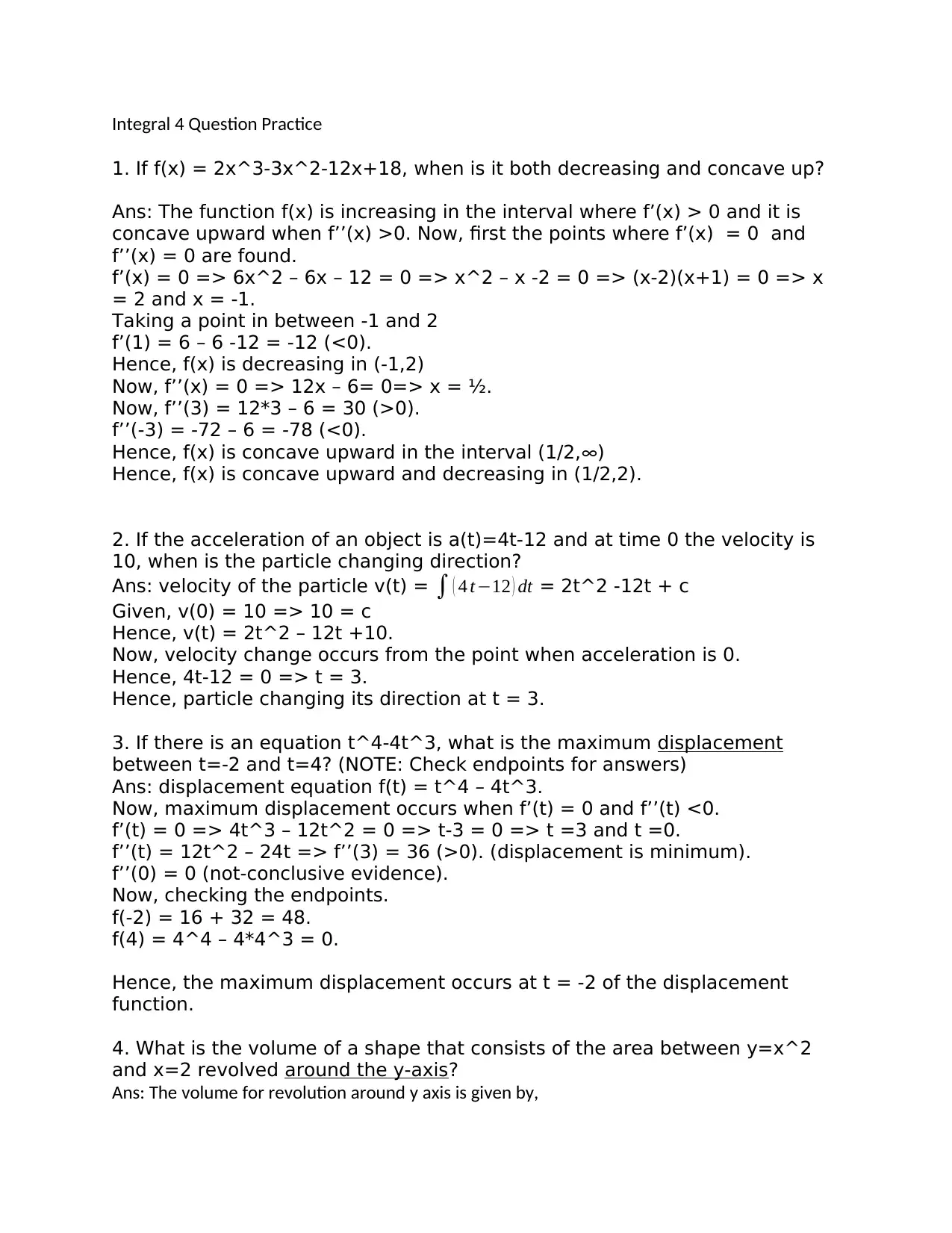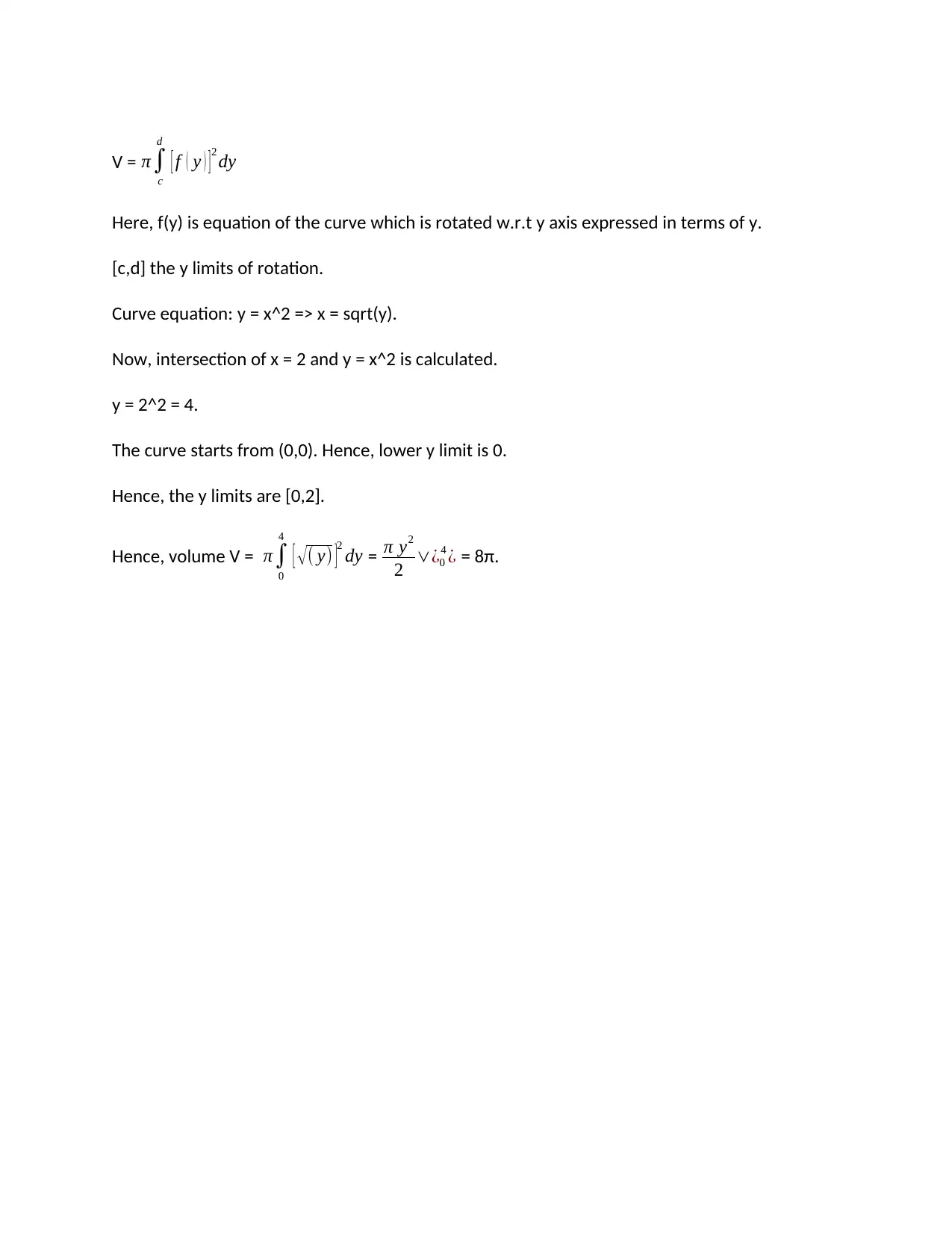Calculus Assignment: Integral 4 Questions and Solutions for Practice
VerifiedAdded on 2023/01/17
|2
|719
|90
Homework Assignment
AI Summary
This document provides a comprehensive solution set for four integral calculus problems. The solutions cover a range of concepts, including determining intervals where a function is both decreasing and concave upward, calculating the time when a particle changes direction based on its acceleration, finding the maximum displacement of a function, and calculating the volume of a shape generated by revolving an area around the y-axis. Each solution includes detailed steps and explanations, making it a valuable resource for students studying calculus and looking to practice and understand integral concepts. The document is designed to help students solidify their understanding of integral calculus and improve their problem-solving skills. Desklib provides access to this and many more resources.
1 out of 2








![[object Object]](/_next/static/media/star-bottom.7253800d.svg)